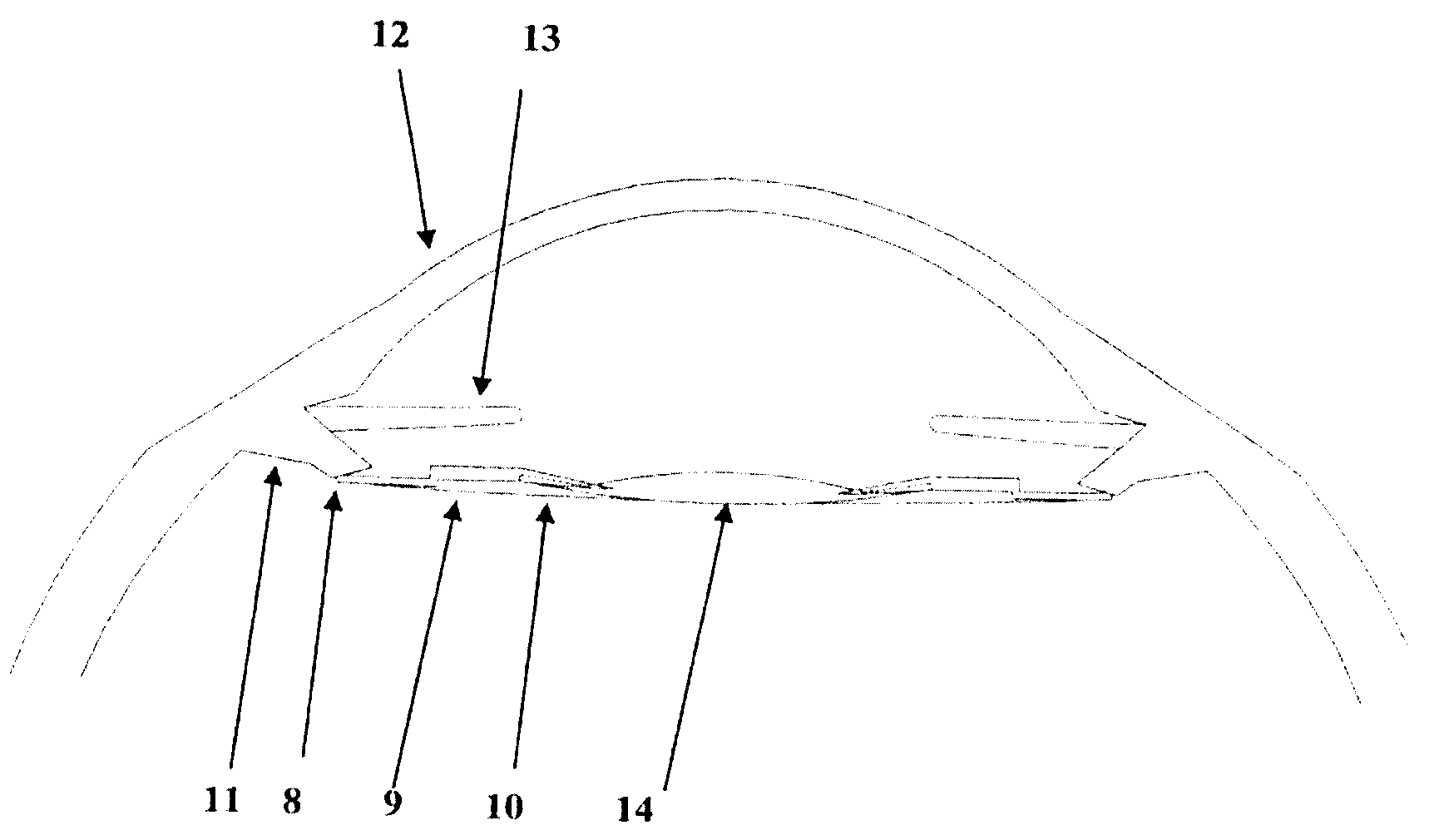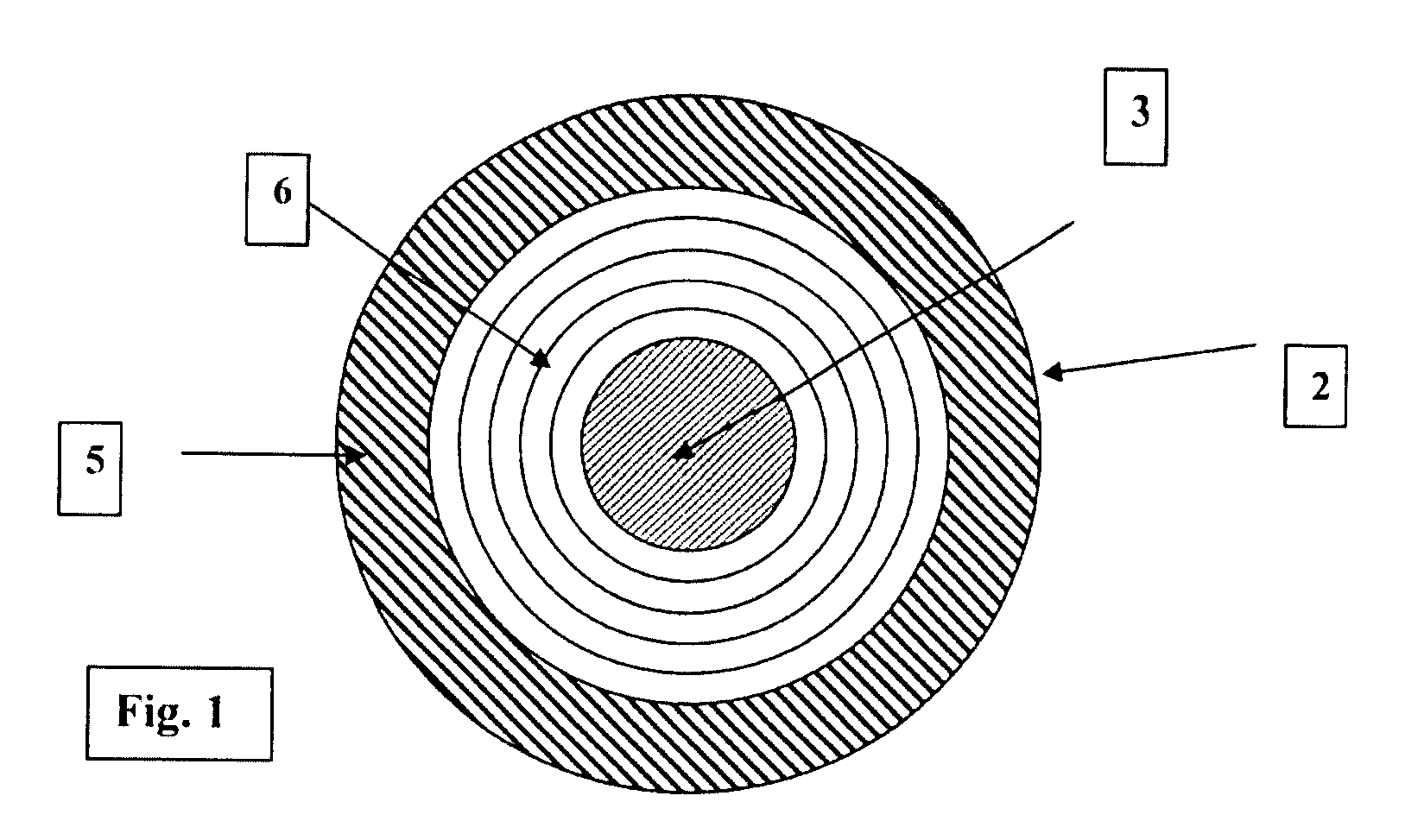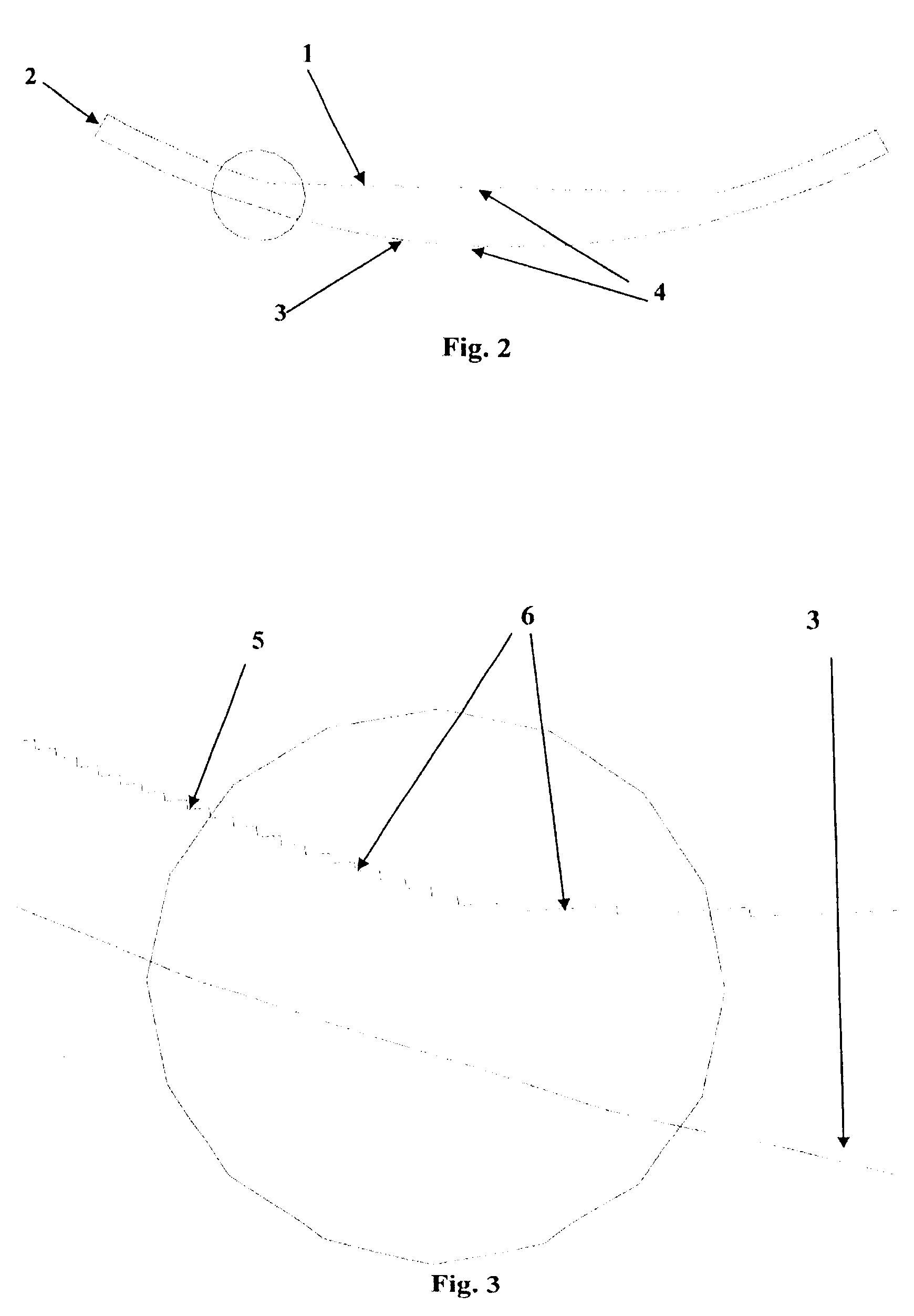Intraocular lens optic
a technology of intraocular lens and optics, which is applied in the field of intraocular lens, can solve the problems of reduced or eliminated the ability of the eye to change focus (that is accommodated), and the range of lens powers available to the dispensing opticians for filling prescriptions, even in aspheric form, and not providing the flexibility of the focal point to allow the patien
- Summary
- Abstract
- Description
- Claims
- Application Information
AI Technical Summary
Benefits of technology
Problems solved by technology
Method used
Image
Examples
examples
[0050]FIG. 1 is a sketch depicting the anterior surface of an intraoptic lens. Depicted is the optical edge of the lens (optical diameter edge to edge or outer optical perimeter) (2), with a lens center thickness, in this case at 475 microns measured at maximum depth at center of optical focal point (3). Shown is also the ring height or maximum thickness of the lens in the central optical zome (4) and rings on anterior surface at peripheral optical area showing the concentric stepped rings for distance vision (5).
[0051]FIG. 2 is a sketch depicting the anterior surface (1), lens thickness or outer perimeter of the optic (2), and center optical focal point (3). Ring height (4), is where concentric rings appear.
[0052]FIG. 3 depicts a magnification of the circular area of FIG. 2, showing the stepped ring surface structure at the anterior of the lens (5) and at center optic area of the lens (intermediate band of the lens showing concentric stepped rings) (6). Lens thickness (3) is measur...
PUM
 Login to View More
Login to View More Abstract
Description
Claims
Application Information
 Login to View More
Login to View More - R&D
- Intellectual Property
- Life Sciences
- Materials
- Tech Scout
- Unparalleled Data Quality
- Higher Quality Content
- 60% Fewer Hallucinations
Browse by: Latest US Patents, China's latest patents, Technical Efficacy Thesaurus, Application Domain, Technology Topic, Popular Technical Reports.
© 2025 PatSnap. All rights reserved.Legal|Privacy policy|Modern Slavery Act Transparency Statement|Sitemap|About US| Contact US: help@patsnap.com



